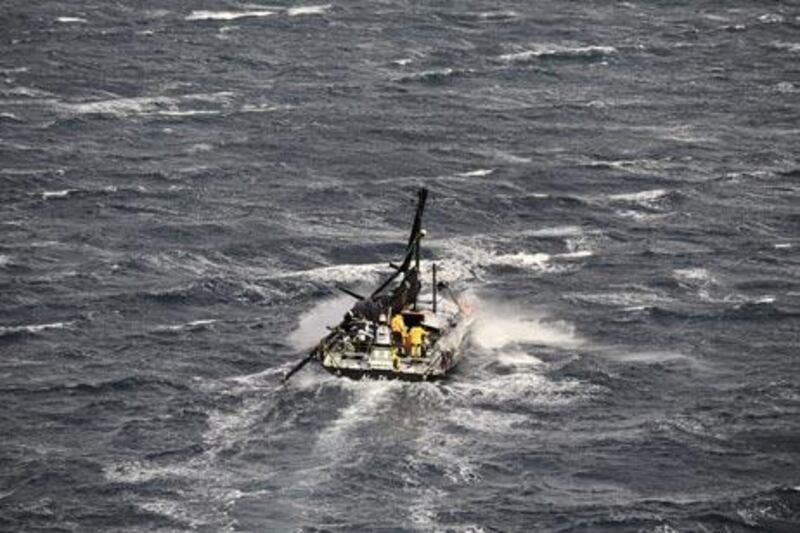In one sense, it is a shame that only three yachts out of six will stream into Cape Town this weekend.
"Well, I think it's disappointing for the race, to have essentially half the fleet," Ian Walker, the Abu Dhabi Ocean Racing skipper, said rationally.
In another sense, people are weird.
We do love narratives of trouble and strife. We did flock to a movie about a cruise ship sinking in the Atlantic, giving it 12 long years as the highest-grossing film ever.
In various conversations in Spain early this month, Volvo Ocean Racing officials noted an uptick in media interest because of Abu Dhabi's busted mast and Team Sanya's busted hull.
Crises do intrigue. An unscientific look at YouTube yesterday showed that a video on the first 24 hours of the race had lured about 33,000 views. A video on Telefonica duelling Puma's Mar Mostro a few weeks back: 12,000. A batch of other race videos: similar numbers. And a video about a "brutal wave" hitting Abu Dhabi with water slamming into bowman Wade Morgan as he tried to free the mainsail: 155,000.
Morgan shrugs it off, even though jumping in the water is not part of competitive sailing. In a crisis you devise a Plan A and a Plan B, he said in Spain, and, "By the time you're jumping in the water, you're well down your letters".
Still, he comprehends the appeal of danger, how humans love watching other humans avert doom. "Scared is not the right word," he said, "but at times I was concerned, thinking, What am I doing here?"
You can see this 11th Volvo Ocean Race as half-empty or doubly full.
In addition to the usual 30 knots in the dark racing of Telefonica, Camper and Groupama, the only boats intact, tack on this fresh suspense concerning the dismasted Mar Mostro. The fleet will leave for Abu Dhabi on December 11, and by then, a ship must get from Durban 800 miles to Cape Town (for Puma's shore crew and tools), to the remotest inhabited island on Earth, Tristan da Cunha (to collect crew and yacht), then back to Cape Town (for repairs and departure).
"The clock has been ticking on this mission for days, but now the ticking is getting louder," Ken Read, the skipper, wrote on Thursday.
At that point, they still motored toward Tristan da Cunha, the British territory with a population of either 270, 264 or 262, depending upon who takes the survey and, apparently, whether somebody has gone away hiking while they take it. Yes, the trouble of Tristan lends flavour.
After all, catch the update by Amory Ross, the Puma media crew member, from last Monday, which began with grabbing lunch down below.
"A few minutes later came a noise like I have never, ever heard before. You know the sound a tree falling in your backyard makes? Take that, make it twice as loud and twice as quick, and put it directly overhead. The boat violently rolled to weather and I found myself on my back, feet in the air, food bowl still in hand."
As narratives go, that was not dull.






